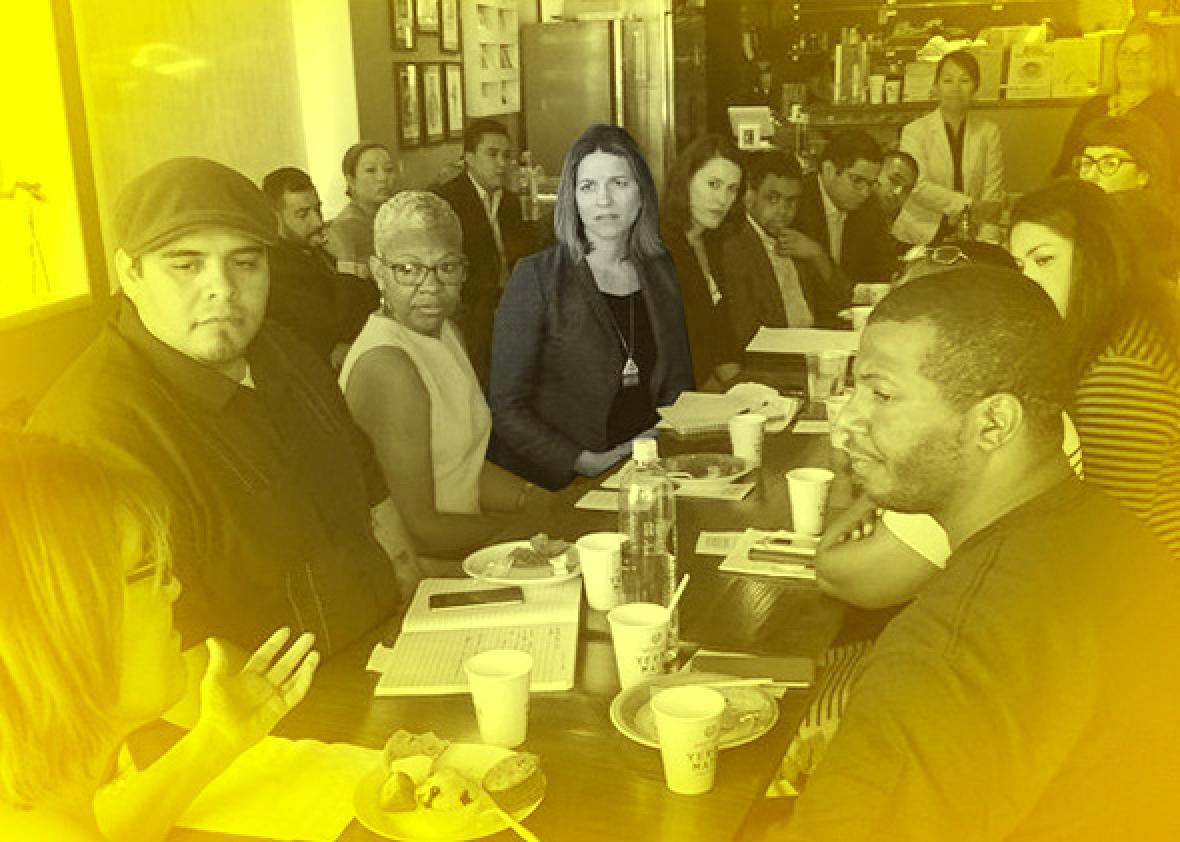Listen to this episode of Working with guest Paulette Aniskoff:
Subscribe in iTunes ∙ RSS feed ∙ Download ∙ Play in another tab
Slate Plus members: Get your ad-free podcast feed.
This season on Working, we’re going to the White House. For our second episode, we spoke to Paulette Aniskoff, director of the White House Office of Public Engagement. Aniskoff has been working with the president since 2007, and she brings many of the strategies developed on the campaign trail to the administration’s outreach to the American citizenry.
She explored questions large and small, including a bit about how the White House coordinates its approach to issues via sequences of morning meetings. Even in our digital age, much of the administration’s internal communication still happens through face-to-face conversations, Aniskoff suggests. That extends to the way she and her office work with constituents: She told us about the effort they put into bringing real people into the White House to talk with the president, going into the ways that they diagram seating charts for meetings in the Roosevelt Room.
To find those people, Aniskoff and her staff turn to a variety of resources, including the correspondence office, whose director spoke to us last week. Doing her job well, she tells us, sometimes means bringing in people who don’t necessarily agree with the president or his policies, because they work to bring a wide range of American voices into the conversation. They also, she says, look to the White House itself, guided by the institution’s own diverse staff as they seek to acknowledge and aid underserved populations.
For Aniskoff, juggling a wide range of issues has meant learning how the president might approach them: “Part of it is understanding the North Star of what the administration is about, and you can just sort of make some assumptions from there. That’s something I’ve gone back to over and over, because you can’t know everything about every issue. You have to understand what the president thinks,” she tells us.
Then, in a Slate Plus extra, Aniskoff goes into detail about how her job has changed since the early days of the campaign and tells us how she maintains balance in her current life as a new mother. If you’re a member, enjoy bonus segments and interview transcripts from Working, plus other great podcast exclusives. Start your two-week free trial at Slate.com/workingplus.
Email: working@slate.com
Twitter: @Jacob_Brogan
Podcast production by Mickey Capper.
